Difference between revisions of "Self-Propelled Guns"
| Revision as of 09:54, 21 August 2011 | Revision as of 12:09, 21 August 2011 | |||
| Line 1: | Line 1: | |||
| {{panel title|icon=[[image:Ico SPG.png|100px|left|link=|]]|content= | {{panel title|icon=[[image:Ico SPG.png|100px|left|link=|]]|content= | |||
| ? | Self Propelled Guns (also known as artillery or arty, hereafter SPGs) provide powerful indirect fire support, with a very large range that can potentially cover the entire map. | + | Self Propelled Guns (also known as artillery or arty, hereafter SPGs) provide powerful indirect fire support, with a very large range that can potentially cover the entire map. They stay safe by remaining well within friendly lines, and provide support against tough stationary or slow targets. | |
| ? | Almost exclusively, SPGs use high explosive shells lobbed in a ballistic arc to hit distant targets. | + | Almost exclusively, SPGs use high explosive shells lobbed in a ballistic arc to hit distant targets. The inaccuracy of their weapons, particularly at higher tiers, makes the splash damage caused by the explosion often the primary source of damage, with direct hits being crippling to the target tank. The heaviest SPG can weigh up to 115 tons. Speeds vary greatly and range from maximum speeds of 20 km/h to 56 km/h. Armor is usually negligible, and with a maximum armor thickness of 60mm, SPGs are vulnerable to light and medium tanks. SPGs possess the most powerful weapons in the game, being able to deliver over twice the damage of the most powerful cannons available on a similarly-tiered tank or tank destroyer. However, poor accuracy, aiming speed, and reload time make their weapons effective only against slow and stationary tanks, or tanks moving in a straight line at a constant speed. | |
| ? | SPGs are capable of using artillery mode (Left Shift), which gives them a bird's-eye view of the whole map, though due to screen size limitations you see only a small portion. Map | + | SPGs are capable of using artillery mode (Left Shift), which gives them a bird's-eye view of the whole map, though due to screen size limitations you see only a small portion. Map navgiation in this mode is very easy. Be aware that moving this vehicle sideways on the map will cause it to physically reposition itself, which will significantly reduce your firing accuracy. The reticle will still display as expected, but will vary in shape with the terrain. This eliminates the need to get reasonably close to the target to hit it. | |
| ? | SPGs work closely with scouts, using them to spot targets | + | SPGs work closely with scouts, using them to spot targets. SPG support is essential in a scenario in which smaller tanks are up against more powerful tanks, and can quickly turn the tide of a battle. SPGs are also one of the best weapons against enemy artillery, able to fire blindly at potential enemy positions by spotting tracer fire. | |
| ? | SPGs should relocate after firing, and avoid predictable locations to prevent from being destroyed by counter-artillery fire. | + | SPGs should relocate after firing, and avoid predictable locations to prevent from being destroyed by counter-artillery fire. Good situational awareness is also essential to survive in an SPG. Noticing breaks in a defensive line early can allow an SPG to relocate before an enemy scout can arrive. | |
| On visual or minimap, SPGs appear as red or green squares. | On visual or minimap, SPGs appear as red or green squares. | |||
Revision as of 12:09, 21 August 2011

Self Propelled Guns (also known as artillery or arty, hereafter SPGs) provide powerful indirect fire support, with a very large range that can potentially cover the entire map. They stay safe by remaining well within friendly lines, and provide support against tough stationary or slow targets.
Almost exclusively, SPGs use high explosive shells lobbed in a ballistic arc to hit distant targets. The inaccuracy of their weapons, particularly at higher tiers, makes the splash damage caused by the explosion often the primary source of damage, with direct hits being crippling to the target tank. The heaviest SPG can weigh up to 115 tons. Speeds vary greatly and range from maximum speeds of 20 km/h to 56 km/h. Armor is usually negligible, and with a maximum armor thickness of 60mm, SPGs are vulnerable to light and medium tanks. SPGs possess the most powerful weapons in the game, being able to deliver over twice the damage of the most powerful cannons available on a similarly-tiered tank or tank destroyer. However, poor accuracy, aiming speed, and reload time make their weapons effective only against slow and stationary tanks, or tanks moving in a straight line at a constant speed.
SPGs are capable of using artillery mode (Left Shift), which gives them a bird's-eye view of the whole map, though due to screen size limitations you see only a small portion. Map navgiation in this mode is very easy. Be aware that moving this vehicle sideways on the map will cause it to physically reposition itself, which will significantly reduce your firing accuracy. The reticle will still display as expected, but will vary in shape with the terrain. This eliminates the need to get reasonably close to the target to hit it.
SPGs work closely with scouts, using them to spot targets. SPG support is essential in a scenario in which smaller tanks are up against more powerful tanks, and can quickly turn the tide of a battle. SPGs are also one of the best weapons against enemy artillery, able to fire blindly at potential enemy positions by spotting tracer fire.
SPGs should relocate after firing, and avoid predictable locations to prevent from being destroyed by counter-artillery fire. Good situational awareness is also essential to survive in an SPG. Noticing breaks in a defensive line early can allow an SPG to relocate before an enemy scout can arrive.
On visual or minimap, SPGs appear as red or green squares.

 Sturmpanzer I Bison
Sturmpanzer I Bison
 Sturmpanzer II
Sturmpanzer II
 Wespe
Wespe
 Grille
Grille
 Hummel
Hummel- File:Germany-G Panther.png
 GW Panther
GW Panther 
 GW Tiger
GW Tiger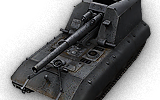
 GW Typ E
GW Typ E
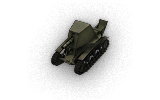
 SU-18
SU-18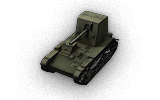
 SU-26
SU-26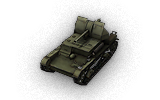
 SU-5
SU-5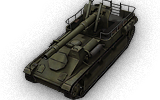
 SU-8
SU-8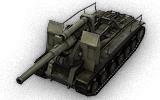
 S-51
S-51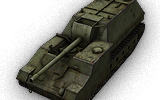
 SU-14
SU-14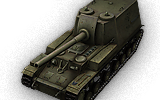
 Object 212
Object 212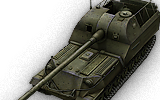
 Object 261
Object 261
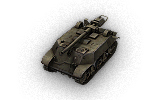
 T57
T57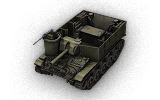
 M37
M37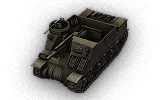
 M7 Priest
M7 Priest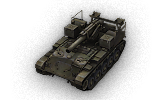
 M41
M41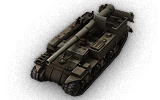
 M12
M12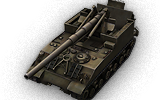
 M40/M43
M40/M43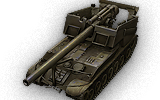
 T92
T92